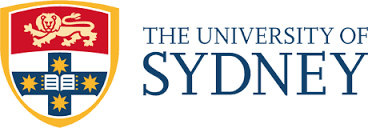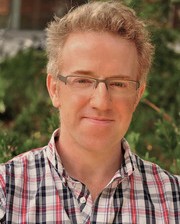Open Source Malaria Research Paves Way for Inexpensive Medicines
Once the domain of IT, a crowd-sourced approach to drug discovery has been shown to work A real-time drug discovery project involving some 50 researchers in nine countries has shown open source malaria research works - providing a potential alternative for medicines similar to the way in which open source products compete with proprietary products in software.
A real-time drug discovery project involving some 50 researchers in nine countries has shown open source malaria research works - providing a potential alternative for medicines similar to the way in which open source products compete with proprietary products in software.
Malaria is one of the leading causes of mortality in developing countries – last year killing more than 400,000 people. Researchers worldwide have found the solution for drug discovery could lie in open, “crowd-sourced” science.
The current gold standard antimalarial treatments are based on artemisinin – a compound developed in the 1970s in China, combined with a partner drug. Resistance to artemisinin and its partners has already emerged in some parts of the world where there are concerns that if the resistance spreads, there will be no viable replacements.
Given the lack of commercial incentive for industry to develop drugs for neglected diseases – and because academic researchers often lack resources to move compounds forward – there is a need for new approaches.
In response, Associate Professor Matthew Todd from the University of Sydney’s School of Chemistry, together with the not-for-profit research and development organisation Medicines for Malaria Venture, proposed a solution akin to the open source concept used in software development.
 Associate Professor Matthew Todd
Associate Professor Matthew Todd
Open source drug discovery is an area Associate Professor Todd has been leading, launching and developing the project in Sydney with support from two Australian Research Council Linkage grants. Through this innovative work, Associate Professor Todd has demonstrated that open source research mechanisms work in the discovery of new medicines.
Tonight in ACS Central Science, an international consortium of researchers unveiled its findings for the project that has been five years in the making.
The University of Sydney’s Deputy Vice-Chancellor (Research), Professor Duncan Ivison, said the implications for this unique research were far-reaching: ”This is thought-provoking research,” Professor Ivison said.
“Can an open-source mechanism be used to break the deadlock of discovery in other areas, such as antimicrobials or Zika? How do we marry the efficiency of openness with the often legitimate need to protect intellectual property? Does the open-source research mechanism provide a genuine alternative to the traditional way of doing things, in the way in which open-source products compete with proprietary products in software?
"We need to be constantly testing and trying new models for enabling our research to be translated in ways that benefit our community.”
Associate Professor Todd said the openness of the research stimulated inputs from around the world that were of high value. "A thrill of doing this research was showing that an open source approach to drug discovery actually works: talented and committed people spontaneously worked together to accelerate the science," Associate Professor Todd said.
“The diversity of the paper's author list is clear testament to the community that has come together to advance this project.”
More than 50 researchers from 21 organisations – across Australia, USA, India, Switzerland, Spain, England, Scotland, Belgium and Canada – added their research to the project, which started with a large set of potential drug molecules made public by the company GlaxoSmithKline.
First author on the paper, Dr Alice Williamson from the University of Sydney, said it was a big job coordinating the inputs the consortium received but was well worth the effort to create a legacy of research for use by anyone for any purpose and which allowed contributors to influence directly the course of the project in real time.
"Scientists love to share their results but all too often we only share the positive outcomes and at the end of the research process,” Dr Williamson said.
“Under the traditional model, vast amounts of publicly funded research is lost."
Medicines for Malaria Venture chief scientific officer Dr Timothy Wells said there was a huge amount of goodwill and intellectual input and this publication was just the start. “We look forward to working with partners like Mat to continue to develop this new open approach to drug discovery, with the ultimate goal of identifying a new drug candidate,” Dr Wells said.
The authors acknowledge funding from Medicines for Malaria Venture, the Australian Research Council, the Australian National Health and Medical Research Council, the European Molecular Biology Laboratory member states, the National Science Foundation and the Wellcome Trust.
Read more in The Conversation explainer by A/Prof Matthew Todd and Dr Alice Williamson.
Media Contact:
Vivienne Reiner
Media and PR Adviser (Science, Veterinary Science, Agriculture)
Phone
+61 2 9351 2390
+61 438 021 390
Email
[email protected]
Address
Room 192, Level 1 Carslaw F07
- Tags:
- ACS Central Science
- Alice Williamson
- Australian National Health and Medical Research Council
- Australian Research Council Linkage
- crowdsourcing
- Duncan Ivison
- European Molecular Biology Laboratory
- GlaxoSmithKline
- malaria research
- Matthew Todd
- Medicines for Malaria Venture
- National Science Foundation
- open source
- Open source drug discovery
- open source malaria research
- openness
- Timothy Wells
- University of Sydney’s School of Chemistry
- Wellcome Trust
- Login to post comments